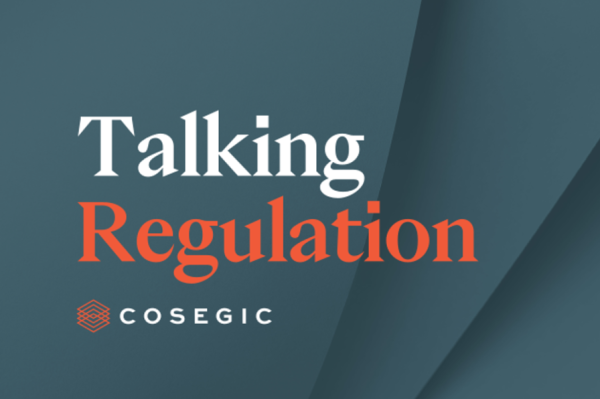Listeners to Radio 4’s venerable “I’m Sorry I Haven’t a Clue” will know the ”Uxbridge English Dictionary” round, where panelists provide new definitions for common words. Among my favourites (well, those that I can put in a work article anyway) are “Irony – A bit like an iron”, “Speculate – 24-hour opticians” and “Tap – Yorkshire based software for t’iPhone”.
As part of the European Banking Authority’s proposals to the European Commission for PSD3, they have also been looking at definitions. As you might expect these are nowhere near as funny, but are vitally important to those of us in the payment world.
As I mentioned in my previous article the EBA’s proposals include combining the E-Money Directive into PSD3 which, presumably, will mean that issuing E-money will become a payment service.
The definition of E-money in the 2nd E-Money Directive (2EMD) is:
“electronically (including magnetically) stored monetary value as represented by a claim on the electronic money issuer which—
(a) is issued on receipt of funds for the purpose of making payment transactions;
(b) is accepted by a person other than the electronic money issuer;”
The EBA also say that PSD3 should clarify the definition of ‘payment account’ but, interestingly, they also say that they are “of the view that operating a payment account is not a payment service requiring a separate authorisation” suggesting that the nature of the services provided to the customer through the account will be the key determining factor in the permissions required.
It has long been a matter of irritation to some UK firms which also operate elsewhere in the EU that the FCA’s view of the provision in Article 18(2) of PSD2 that payment institutions “may hold only payment accounts which are used exclusively for payment transactions” appears considerably more restrictive than those of many EU competent authorities, as meaning that any funds in a payment account offered by a payment institutions which are not the subject of a specific future dated payment instructions are in breach of this requirements, so that any business model involving such a process, effectively requires EMI authorisation or registration. Clarification of this could be helpful, but may have significant impacts on some business models if followed in the UK.
The EBA also note the different definitions of payment account in PSD2 and the Payment Accounts Directive and the confusion which this can give rise to (something we have seen in the UK) and say, “This can potentially be addressed in the Directive by requiring PIs/EMIs to use payment accounts for the execution of payment transactions and to clarify separately the payment services that require the use of a payment account”. Given that that the basis of Account Information Services (AIS) and Payment Initiation Services (PIS) is access to payment accounts, any change in this could have wider impacts on some business models.
The EBA also say that they think that the definition of “payment instrument” as ‘a personalised device(s) and/or set of procedures agreed between the payment service user and the payment service provider and used in order to initiate a payment order’ requires further clarification because in the example they give “it is not clear whether a mobile phone or a computer can be considered as a payment instrument”. In this example I believe that they are completely wrong but, as many clients have heard me say, in the end it doesn’t matter what I think, or you think, or your lawyers think, its what the regulators think that matters, and in this case the EBA is the regulator.
An interesting point, given the massively increased use of contactless (particularly in the UK since the value limit increased to £100) is the EBA’s reference to the ECJ judgment C-287/19, which ruled that the NFC (contactless) functionality of a personalised multifunctional bank card constitutes a ‘payment instrument’. The EBA have identified some possible contradictions with the contactless exemption and an unintended consequence on the application of the liability provisions relating to the payer’s liability for unauthorised transactions, which will need to be addressed.
They also say that online banking should be considered a “payment channel” rather than a payment instrument, but point out that while the term “payment channel” is used in Article 97 and 98 (on authentication) and in a number of recitals, it is not a defined term, and indeed is used interchangeably with “payment instrument.” Differentiating between the two will doubtless be the subject of much detailed debate as PSD3 is developed, and the outcome will be important for the structuring of business models for banks, EMIs and PIs.
What does this mean?
Lack of clear definition can lead to regulators and firms taking the approach used by Humpty Dumpty in Lewis Carroll’s Alice Through the Looking Glass:
“When I use a word,’ Humpty Dumpty said in rather a scornful tone, ‘it means just what I choose it to mean — neither more nor less.’
’The question is,’ said Alice, ‘whether you can make words mean so many different things.’
’The question is,’ said Humpty Dumpty, ‘which is to be master — that’s all.”
The EBA and the Commission have the task of deciding “which is to be master” in PSD3, and the FCA and HM Treasury will doubtless be watching while making their own minds up about whether and how much of this should be replicated in the UK.
As I said at the end of my previous article on PSD3, the final version may be some years off, and indeed things will change in the interim (just while writing this piece I noted that Mark Zuckerberg had announced that Meta is launching a new “payments in chat” feature in Instagram, and I’m certain the EU Commission will want to consider the regulation of that in their deliberations), but it’s certain the outcome will impact all of us in the payment world, so keeping an eye on developments is important.
Related resources
All resources
Ensuring fair treatment: Vulnerable Customers and the Vulnerability Registration Service

Payment Services Newsletter - March 2025

DORA - Exploring Firms' Readiness

Talking Regulation: Cosegic's response to FCA CP 24/28

